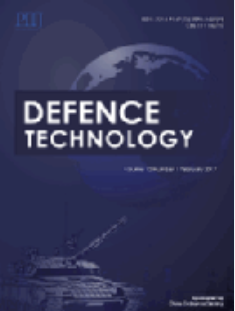Exploring the effects of angle of incidence on stabbing resistance in advanced protective textiles: Novel experimental framework and analysis
IF 5
Q1 ENGINEERING, MULTIDISCIPLINARY
引用次数: 0
Abstract
Despite numerous research investigations to understand the influences of various structural parameters, to the authors' knowledge, no research has been the effect of different angles of incidence on stab response and performance of different types of protective textiles. Three distinct structures of 3D woven textiles and 2D plain weave fabric made with similar high-performance fiber and areal density were designed and manufactured to be tested. Two samples, one composed of a single and the other of 4-panel layers, from each fabric type structure, were prepared, and tested against stabbing at [0°], [22.5°], and [45°] angle of incidence. A new stabbing experimental setup that entertained testing of the specimens at various angles of incidence was engineered and utilized. The stabbing bench is also equipped with magnetic sensors and a UK Home Office Scientific Development Branch (HOSDB)/P1/B sharpness engineered knives to measure the impact velocity and exerted impact energy respectively. A silicon compound was utilized to imprint the Back Face Signature (BFS) on the backing material after every specimen test. Each silicon print was then scanned, digitized, and precisely measured to evaluate the stab response and performance of the specimen based on different performance variables, including Depth of Trauma (DOT), Depth of Penetration (DOP), and Length of Penetration (LOP). Besides, the post-impact surface failure modes of the fabrics were also measured using Image software and analyzed at the microscale level. The results show stab angle of incidence greatly influences the stab response and performance of protective textiles. The outcome of the study could provide not only valuable insights into understanding the stab response and capabilities of protective textiles under different angle of incidence, but also provide valuable information for protective textile manufacturer, armor developer and stab testing and standardizing organizations to consider the angle of incidence while developing, testing, optimizing, and using protective textiles in various applications.
探索入射角对高级防护纺织品抗刺性的影响:新颖的实验框架和分析
尽管有大量的研究调查来了解各种结构参数的影响,但据作者所知,还没有研究不同入射角对不同类型防护纺织品的刺伤反应和性能的影响。设计并制造了性能纤维和面密度相近的三种不同结构的三维机织物和二维平纹织物进行测试。从每种织物类型结构中制备了两种样品,一种由单层组成,另一种由4层组成,并在[0°],[22.5°]和[45°]入射角下进行了刺穿测试。设计并利用了一种新的刺伤实验装置,该装置可对不同入射角的试样进行测试。刺刀台还配备了磁传感器和英国内政部科学发展部门(HOSDB)/P1/B锐度设计的刀具,分别测量冲击速度和施加的冲击能量。每次试样测试后,使用硅化合物在背衬材料上刻印背面签名(BFS)。然后对每个硅印进行扫描、数字化和精确测量,以评估基于不同性能变量的刺伤响应和试样的性能,包括创伤深度(DOT)、穿透深度(DOP)和穿透长度(LOP)。此外,利用Image软件对织物的冲击后表面破坏模式进行了测量,并在微尺度上进行了分析。结果表明,刺刀入射角对防护织物的刺刀响应和性能影响较大。研究结果不仅可以为了解不同入射角下防护纺织品的刺伤响应和性能提供有价值的见解,而且可以为防护纺织品制造商、装甲开发商和刺伤测试和标准化组织在各种应用中开发、测试、优化和使用防护纺织品时考虑入射角提供有价值的信息。
本文章由计算机程序翻译,如有差异,请以英文原文为准。
求助全文
约1分钟内获得全文
求助全文
来源期刊

Defence Technology(防务技术)
Mechanical Engineering, Control and Systems Engineering, Industrial and Manufacturing Engineering
CiteScore
8.70
自引率
0.00%
发文量
728
审稿时长
25 days
期刊介绍:
Defence Technology, a peer reviewed journal, is published monthly and aims to become the best international academic exchange platform for the research related to defence technology. It publishes original research papers having direct bearing on defence, with a balanced coverage on analytical, experimental, numerical simulation and applied investigations. It covers various disciplines of science, technology and engineering.
 求助内容:
求助内容: 应助结果提醒方式:
应助结果提醒方式:


